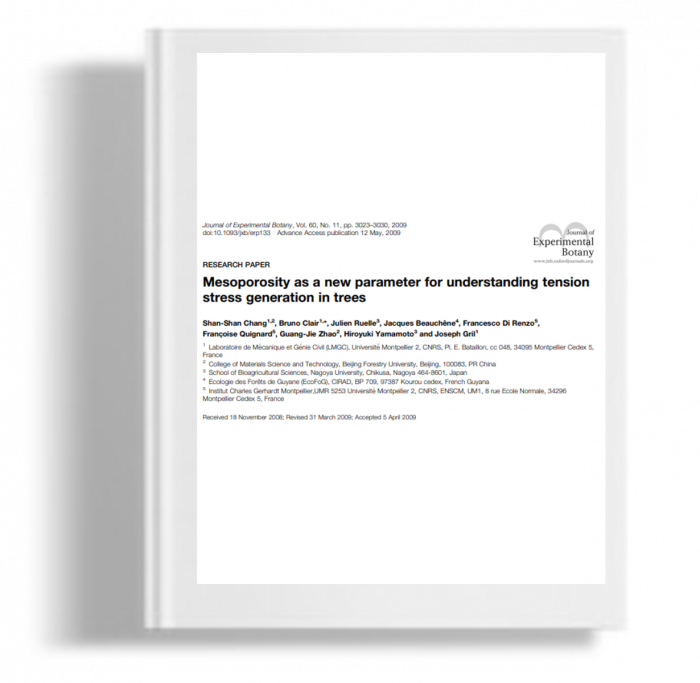Kami menggunakan cookies untuk membuat pengalaman Anda lebih baik. Untuk mematuhi petunjuk e-Pribadi yang baru, kami perlu meminta persetujuan Anda untuk menyetel cookies. Pelajari lebih lanjut .
Mesoporosity as a new parameter for understanding tension stress generation in trees
The mechanism for tree orientation in angiosperms is based on the production of high tensile stress on the upper side of the inclined axis. In many species, the stress level is strongly related to the presence of a peculiar layer, called the G-layer, in the fibre cell wall. The structure of the G-layer has recently been described as a hydrogel thanks to N2 adsorption–desorption isotherms of supercritically dried samples showing a high mesoporosity (pores size from 2–50 nm). This led us to revisit the concept of the G-layer that had been, until now, only described from anatomical observation. Adsorption isotherms of both normal wood and tension wood have been measured on six tropical species. Measurements show that mesoporosity is high in tension wood with a typical thick G-layer while it is much less with a thinner G-layer, sometimes no more than normal wood. The mesoporosity of tension wood species without a G-layer is as low as in normal wood. Not depending on the amount of pores, the pore size distribution is always centred around 6–12 nm. These results suggest that, among species producing fibres with a G-layer, large structural differences of the G-layer exist between species.
The mechanism for tree orientation in angiosperms is based on the production of high tensile stress on the upper side of the inclined axis. In many species, the stress level is strongly related to the presence of a peculiar layer, called the G-layer, in the fibre cell wall. The structure of the G-layer has recently been described as a hydrogel thanks to N2 adsorption–desorption isotherms of supercritically dried samples showing a high mesoporosity (pores size from 2–50 nm). This led us to revisit the concept of the G-layer that had been, until now, only described from anatomical observation. Adsorption isotherms of both normal wood and tension wood have been measured on six tropical species. Measurements show that mesoporosity is high in tension wood with a typical thick G-layer while it is much less with a thinner G-layer, sometimes no more than normal wood. The mesoporosity of tension wood species without a G-layer is as low as in normal wood. Not depending on the amount of pores, the pore size distribution is always centred around 6–12 nm. These results suggest that, among species producing fibres with a G-layer, large structural differences of the G-layer exist between species.

